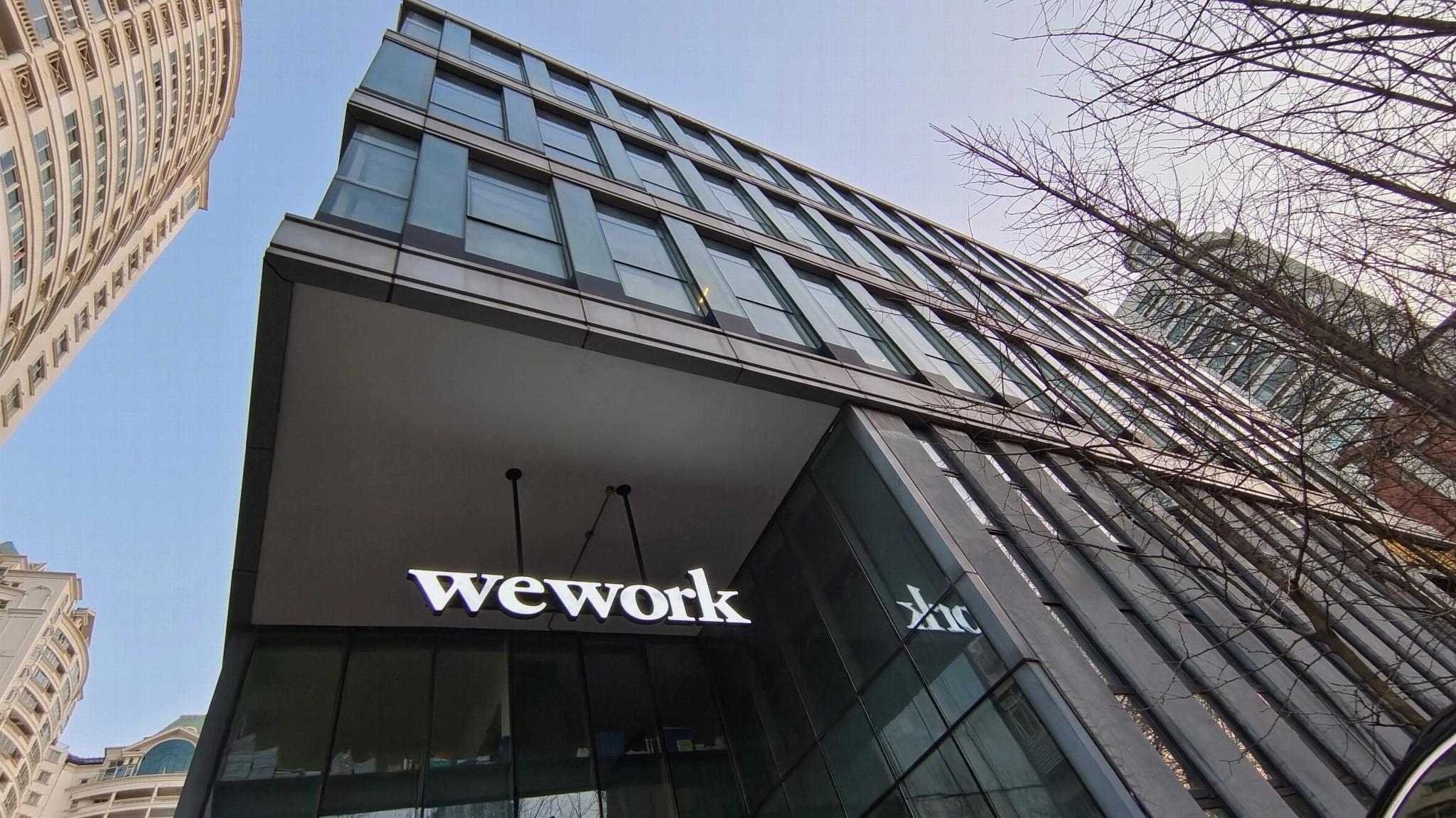WeWork, the global flexible workspace provider credited with making the practice of coworking fashionable, has filed for bankruptcy after trying to restructure and renegotiate leases with nearly all its landlords.
The New York-based company said in a statement that it filed for Chapter 11 bankruptcy protection Monday in the United States Bankruptcy Court for the District of New Jersey. WeWork added that it's "requesting the ability to reject the leases of certain locations, which are largely non-operational and all affected members have received advance notice."
The company, which has struggled because it grew fast in the 2010s by taking on too many leases at too high a cost, also said it filed to "accelerate our strategic plan and pull WeWork’s future forward by aggressively addressing our legacy leases and dramatically improving our balance sheet." The company said its open spaces are still operating.
WeWork said it entered into a restructuring support agreement with holders representing about 92% of its secured notes that reduces the company's existing funded debt by about $3 billion.
The company said the filing applies only to WeWork’s United States operation while Canada is set to make its own equivalent of a bankruptcy filing. Locations outside the United States and Canada and WeWork’s franchised locations aren’t part of the proceedings.
WeWork has said occupancy in both the United States and Canada has trailed far behind other markets. Hundreds of WeWork affiliates also filed for bankruptcy protection on Monday, even though the cases are expected to be consolidated under WeWork’s as one proceeding, according to the bankruptcy filing.
In a sign of WeWork’s financial woes ahead of the filing, WeWork said in the court papers it had $18.66 billion in debts as of June 30, and more than $15.06 billion in assets. Among some of its largest unsecured creditors are landlords including Westfield Fulton Center, RFR Realty, Cushman & Wakefield and Beacon Capital Partners. U.S. Bank Trust Co. has the biggest exposure, with more than $180 million in unsecured claims alone among creditors who have WeWork’s 30 largest unsecured claims and are not insiders, according to the filing.
“They are gonna use the bankruptcy to come out a leaner and stronger company,” Jamie Hodari, chief executive of WeWork rival Industrious, said in an interview after the filing. He said he’s “impressed” with the fact WeWork was able to get holders representing 92% of its secured notes to sign on to reduce debt. “It’s a very big win for” WeWork CEO David Tolley, Hodari told CoStar News. “It’s very helpful for the next phase of the company.”
Financial Pressure
Late Friday, Fitch Ratings downgraded WeWork’s long-term credit rating to “restricted default,” the lowest rank on the firm’s scale. It’s typically assigned only to issuers that have failed to meet some debt obligation, and where there’s a strong indication of an impending bankruptcy, according to Fitch. WeWork said last month it missed interest payments totaling about $95 million with a 30-day grace period. But that grace period has expired, and its lenders gave it an extension to skirt a default.
WeWork warned in August that “substantial doubt exists” about its ability to continue as a going concern unless it can improve liquidity and profitability over the next 12 months. In September, WeWork said it had begun seeking to renegotiate nearly all its leases as those obligations posed the “primary challenge and obstacle” to the money-losing company’s profitability and free cash flow.
Industry professionals have told CoStar News that through a bankruptcy filing, WeWork can gain some leverage in terms of bypassing landlords to reject leases it doesn’t want.
There are various disadvantages to filing for bankruptcy, though, including shareholders likely seeing their equity stakes wiped out, as secured and priority creditors get paid first. It’s also an expensive process, and there’s a risk WeWork may not emerge from bankruptcy.
As the pandemic-driven hybrid work pattern upended many companies’ space needs, WeWork has been hurt by stepped-up competition from coworking rivals, landlords debuting their own prebuilt suites, and an unprecedented amount of available sublease space on the market.
Weighed down by lease liabilities that totaled over two-thirds of its operating expenses and 74% of its revenue in the second quarter, WeWork’s occupancy rate didn’t rise to the level needed to help offset leasing costs, analysts have said.
WeWork’s occupancy in the United States and Canada dropped to 67% in the second quarter from 69% in the first quarter, trailing other global markets by well over 10 percentage points, hurt in part by the slower United States return-to-office rate.
Prior to the bankruptcy filing, WeWork had not yet reported third-quarter results. In recent months, it had removed at least 45 United States locations from its website in an indication of the changes at the company, according to a review of its site and CoStar data.
BTIG analyst Thomas Catherwood has told CoStar News WeWork would need to generate occupancy rates of about 80% or higher to make its leased locations profitable.
He added that the company's United States and Canada markets are the weak spots against areas overseas that were faring much better.
Rivals’ Approach
While various studies have shown the flexible office sector is poised to benefit amid uncertainty about companies’ space needs, WeWork’s troubles paint a sharp contrast against rivals.
For example, Industrious shifted to so-called asset-light management agreements with landlords and building operators in 2017. Hodari has told CoStar News that about 90% of its North American locations are set up that way, with rent taking up a percentage of total revenue in the “low 30s.”
WeWork has a “very unforgiving business model,” Hodari has said. Industrious is expected to turn profitable by the end of 2023, according to the CEO.
Under charismatic co-founder Adam Neumann, WeWork gained a high profile with fast growth in the years following its 2010 founding. Its expansion at the cost of profit even led to the company in 2018 claiming it had become the largest private occupier of office space in Manhattan, with over 5.3 million square feet. WeWork boasted at the time its footprint was larger than even the four banking giants, including JPMorgan Chase that WeWork said had dominated the city’s commercial real estate market for years.
WeWork was “willing to sign leases for pretty hefty amounts," Kent Reynolds, a director at Fitch, has told CoStar News. He added that those leases amounted to “a huge debt,” with agreements extending 10 to 20 years, and that WeWork attempted to “make money with short-term agreements that let people come in and out.”
It remains to be seen how many locations WeWork will end up with after the bankruptcy filing. WeWork’s September announcement that it planned to renegotiate nearly all its leases came after it already exited or amended 590 leases since the fourth quarter of 2019 and cut $12.7 billion in future lease payments.
Corporate governance concerns led to a failed attempt at an initial public offering in the fall of 2019. Neumann was ousted before WeWork finally became a publicly traded company about two years later in October 2021.
During that time span, the company’s valuation tumbled to $9 billion from a $47 billion valuation by majority shareholder SoftBank. Still, even after the public share sale, WeWork’s stock lost most of its value, becoming a penny stock that was at risk of being delisted from the New York Stock Exchange before it in September completed a 1-for-40 reverse stock split.
Influence on Industry
WeWork’s trouble has cast new shadows across the United States real estate industry that’s already battling with record-high office vacancy. The coworking giant is a major tenant in markets such as New York, and its lease payments back billions of dollars in property loans and commercial mortgage-backed securities.
WeWork’s bankruptcy, "at market level, it’s not a tremendous impact," Phil Mobley, CoStar’s national director of office analytics, said in an interview before the filing. But he added that "within the buildings they occupy, it has potential be to be a major impact." Those properties could have trouble getting new financing, for example.
WeWork, which had about 43.9 million rentable square feet globally at the end of last year, held 18.3 million rentable square feet in the United States and Canada at that time, according to its annual filing with the United States Securities and Exchange Commission. While that is a sliver of the nation's total office stock, WeWork has represented a sizable chunk of leasing activity in New York and some other cities.
For instance, while its office stock represented just about 1% of the market inventory in New York, San Francisco, Miami and Boston, the company said its share as a percentage of traditional square feet leased in the first quarter was equivalent to 23%, 21%, 17% and 16%, respectively, in those cities. WeWork's leased United States footprint is less than half a percent of the total office stock in the country, Mobley said.
The woes at WeWork have led to commercial property loans tied to WeWork being downgraded, and to lawsuits. A Barclays study found a total of about $7.5 billion of potential CMBS loan exposure to WeWork, with New York accounting for $2.9 billion, or 38% of those loans.
Among properties being affected, Fitch, for example, has downgraded some CMBS loans tied to properties including 8 Times Square and 1460 Broadway. Fitch said its downgrade reflects the property’s “significant exposure to WeWork,” where it said WeWork makes up 83% of the net rentable area of the high-end office property.
Ahead of its filing, some landlords already have resorted to litigation to advance their interests. For instance, San Francisco-based DivcoWest in September sued WeWork, claiming at least $30 million in damages, after it said the coworking space provider defaulted on its rent payment and vacated its leased space at 311 W. 43rd St.










